There are lots of historic buildings here. But like so many other places in the Delta, Helena-West Helena has struggled economically. There are unfortunately many old buildings in downtown Helena that are empty, abandoned and crumbling. These buildings are fragile, and many of them were severely damaged by a storm earlier this year. One of the victims, tragically, was the old Centennial Baptist Church.

The church was built in 1905 and is listed on the National Register of Historic Places. The Gothic Revival church had been a vital centerpiece to the African American culture of the city, and efforts had been made to renovate the church. It’s hard to imagine what could be savaged, but hopefully the old church can somehow be preserved. Here’s a view of the church from a few years ago...
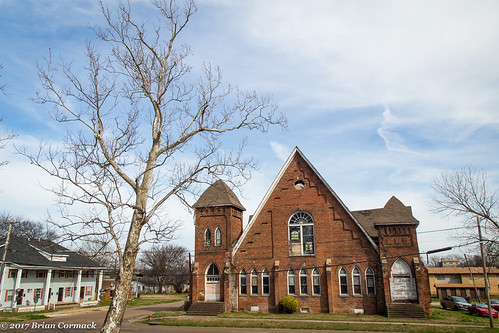
From there I drove by through the old industrial section of the city, which is populated with some old factories and mills. Some of the buildings were abandoned, including this one sitting beneath a tower that stretched up like a skyscraper.

The road passed between these two buildings, which probably aren’t being used anymore.
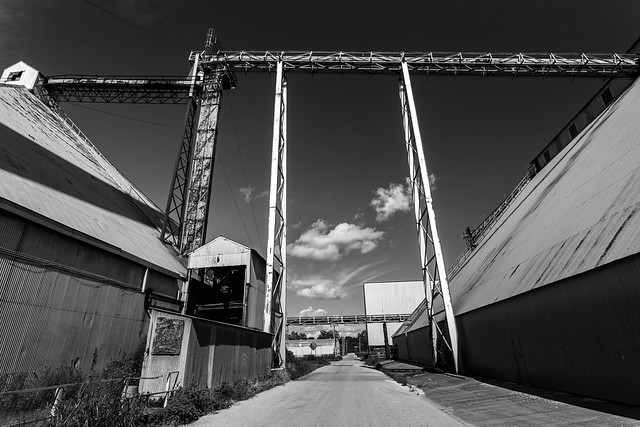
Closer to downtown was the old Bullock’s Soul Food Cafe, which is unfortunately closed and the building is abandoned. I wish the restaurant was open because it probably had some amazingly good food.

Vines have covered most of the side of the building, which proclaims “Home Cooking Served Daily.”

And a picture of the same building from a few years ago. The older buildings across the street that were in the background of this picture have been torn down (one of those buildings used to house an old blues joint called The Kit Kat Club that Robert Johnson played at in the olden days. It’s a vacant lot now).
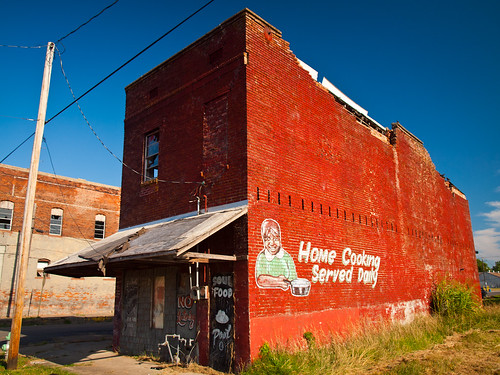
The city of Helena was laid out in 1820, at a spot where the low hills of Crowley’s Ridge met the Mississippi River. The city was formally incorporated in 1833, and would grow to become an important spot for steamboats on the river since it sits between Memphis and Vicksburg. In his book “Life on the Mississippi,” Mark Twain would describe Helena as being “one of the prettiest situations on the Mississippi.”
By 1860, Helena was the largest city in Arkansas along the Mississippi River. As a river town, Helena was known as a wild town with its fair share of crime, gambling, prostitution and violence. During the Civil War, US troops quickly captured the city in 1862 because of its strategic location along the Mississippi River. In 1863, Confederate troops tried to retake the city but suffered significant losses. The city remained in Union control for the rest of the War, and it became home to significant numbers of freed and escaped slaves.
In the early days of the city, most of the commercial district was along Water Street. But the street lived up to its name - in 1867 a major flood washed away most of the buildings. The waters of the Mississippi eroded the riverbank until Water Street was itself underwater. By 1880, the core of the city’s commercial district moved to Cherry Street.
Today, old buildings line Cherry Street for several blocks. One of the most prominent is the old Cleburne Hotel, which was built in 1905. The hotel is empty now, and the windows are boarded up. But if you look close, you can still see an old sign promoting the hotel’s services (which includes a European Plan and even a breakfast for just 25 cents).

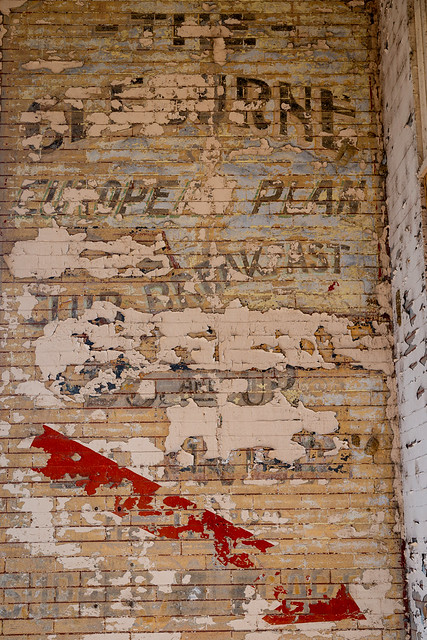
And a wider shot of the front of the hotel. I would love to be able to go inside to take pictures.
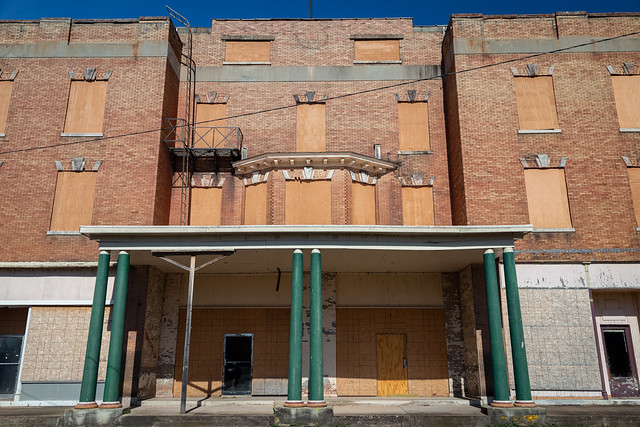
And the side of the hotel, where it looks like there used to be a space for a variety club.
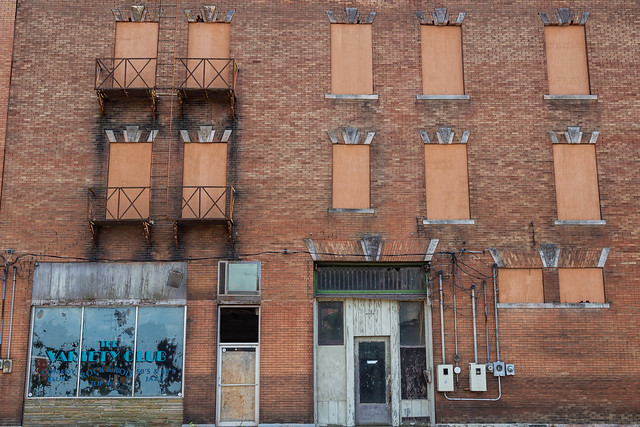

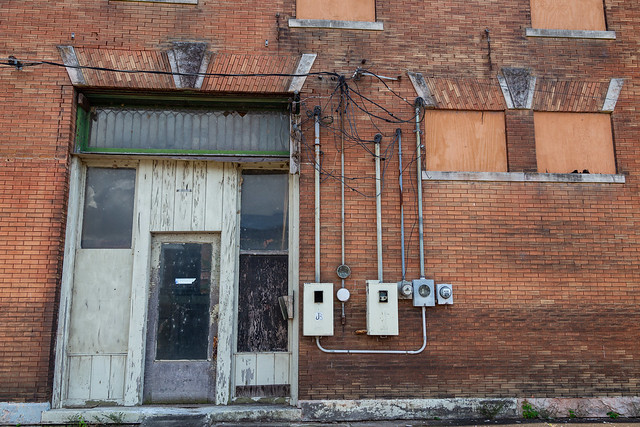
And the view looking down Cherry Street, where unfortunately a few of the older buildings were damaged in the storm a few months ago.
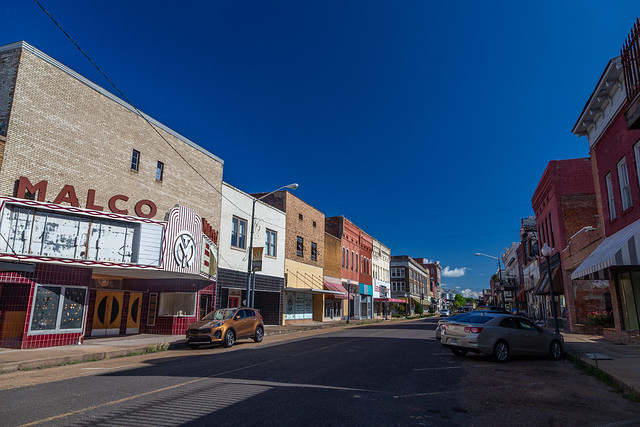
Between Cherry Street and the Mississippi River levee is this old building, which looks to have been abandoned for several years. Vines have shrouded much of the exterior of the building.


A few blocks away was this building, where it appears half of it is disused while the other half is used and open (for a quaint looking coffee-shop). The mix of the two kinda looks like a building version of Twoface from Batman.
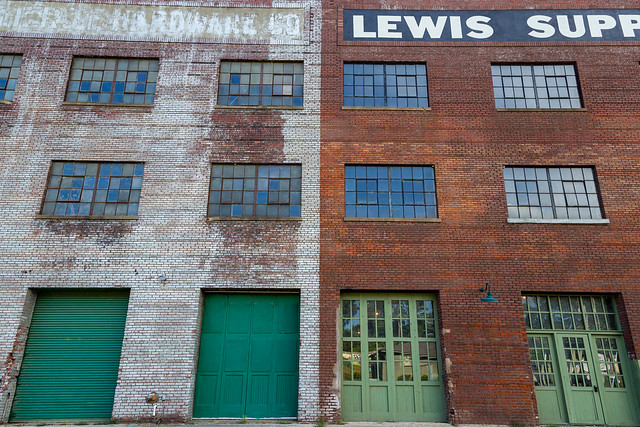
Further down the road is the intersection of Cherry and Missouri Streets. It was a quiet afternoon when I was there, with little traffic cruising through the summer heat. But that was not the case a century ago, when a tragic incident occurred here. The Encyclopedia of Arkansas History states: “On December 23, 1920, in what one newspaper called ‘One of the most dreadful tragedies that the Negroes of the City of Helena has [sic] ever been called on to witness,’ Professor J. W. Gibson was killed by a night watchman in Helena (Phillips County). Depending on how the word “lynching” is interpreted, this may have been an incident of police brutality, or Professor Gibson may in fact have been lynched.” For more on this, click HERE.

If you travel down Cherry Street you will soon reach the historic Phillips County Courthouse. The courthouse was built in 1915.

In the park across the street from the courthouse is a new memorial to the victims of the Elaine Massacre of 1919.

There are also signs in the park commemorating the seven Confederate Civil War generals who were from Helena. What is not commemorated was another piece of history - a lynching that occurred in this park. In 1921, the body of a man was taken from an ambulance and burned in this park. The Encyclopedia of Arkansas again has all the gruesome details HERE.


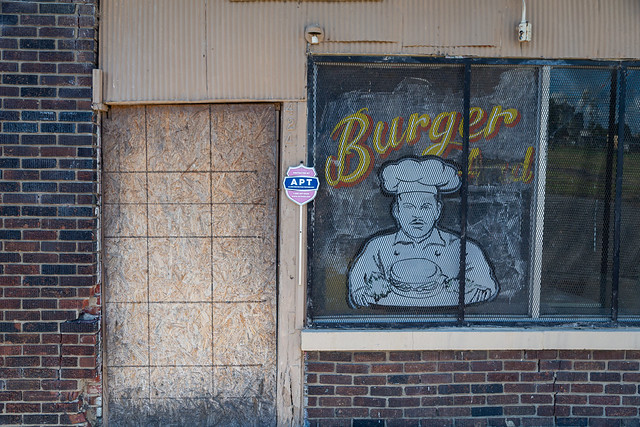

No comments:
Post a Comment